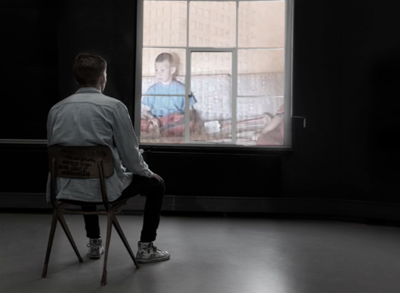User:Annalystad: Difference between revisions
Annalystad (talk | contribs) No edit summary |
Annalystad (talk | contribs) No edit summary |
||
| Line 11: | Line 11: | ||
[[User:Annalystad/reclaim|Reclaim Images]] | [[User:Annalystad/reclaim|Reclaim Images]] | ||
[[User:Annalystad/reclaimnotes|Reclaim notes]] | |||
Revision as of 21:26, 3 April 2017
Trimester 2
Prototyping
Images and Notes
Writing Methods
Thematic Project
Do it Yourself seminar with Esther Urlus
Trimester 1
Prototyping
Images
Writing Methods
File:Writing 1st assignment.pdf
File:Fabian writing about Anna’s Photo Book-2.pdf
Research Links
Oral Performance Artist - Sex and Surgery
Peter Kahn - Human Interaction With Nature
Thematic Project
Happiness
Daniel Kahneman’s theory of the experimenting self and the remembering self. The remembering self is a storyteller, stories are all we have left from our experiences. The experiencing self is a living and conscious self, one experience after another. These experiences either disappear or become memories. The acknowledgement of happiness ruins it. You don't know you're happy until after the fact. Happiness is something you project in the future or memories. Happiness is something you can feel as memories or something you can pursue. The happiness set point is a little above 0.
Notes
'Now, when the question is whether something is beautiful, we do not want to know whether anything depends or can depend on the existence of the thing, either for myself or anyone else, but how we judge it by mere observation (intuition or reflection). … We easily see that, in saying it is beautiful, and in showing that I have taste, I am concerned, not with that in which I depend on the existence of the object, but with that which I make out of this representation in myself. Everyone must admit that a judgement about beauty, in which the least interest mingles, is very partial and is not a pure judgement of taste.' (Kant 1790, section 2) (http://plato.stanford.edu/entries/beauty/)
__________________________________________________________________________________________________________________________________________________________________________________________________________________________________
Kristeva Reframed - Estelle Barrett “In a world immersed in readymade images, consumer advertising and the bureaucratised language of institutions, Kristeva’s work explains how art or aesthetic experience is one of the few means by which we can generate and access images that are linked to our vital and lived experiences and that have the capacity to engender personal, political and social renewal. For Kristeva art or aesthetic experience is a practice that constitutes both a subject ( A sense of self), as well as an object that has the power to transform meaning and consciousness. She views the production of a work of art as continuous with the production of the life of the individual, as a dynamic and performative process that moves between and across embodied experience, biological processes and social and institutional discourses. ” (Barrett, Introduction)
Reding List:
Jones, Amelia. "Postfeminism, Feminist Pleasures, and Embodied Theories of Art," New Feminist Criticism: Art, Identity, Action, Eds. Joana Frueh, Cassandra L. Langer and Arlene Raven. New York: HarperCollins, 1994. 16–41, 20.
Kahn D. 2013. Earth Sound Earth Signal, Energies and Earth Magnitude in the Arts, University of California Press, USA
Gerds H, 2004, Living Beyond the Gender Trap: Concepts of Gender and Sexual
Estelle Barrett, Kristeva Reframed
John Berger, Understanding a Photograph
Susan Sontag, On Photography

